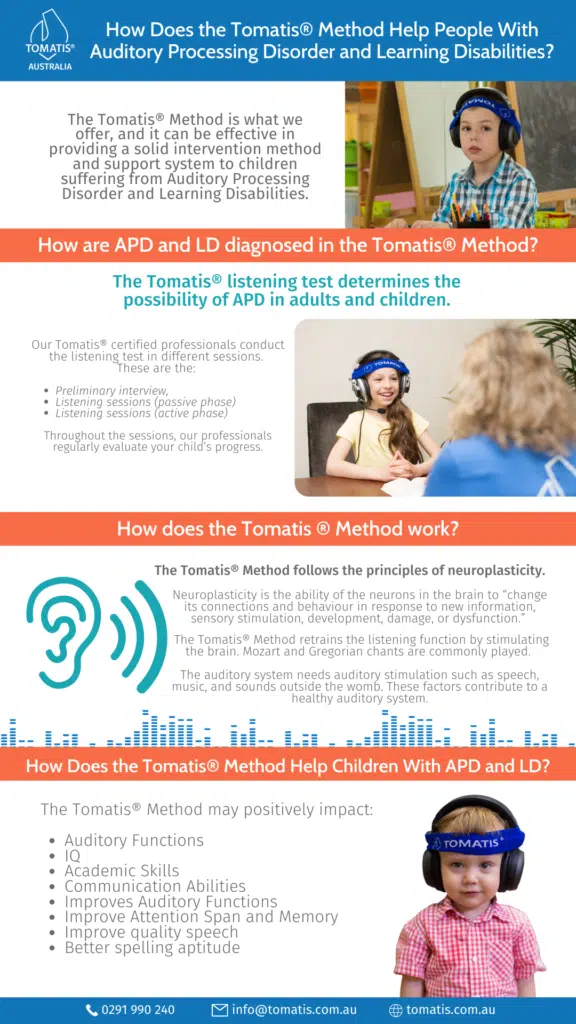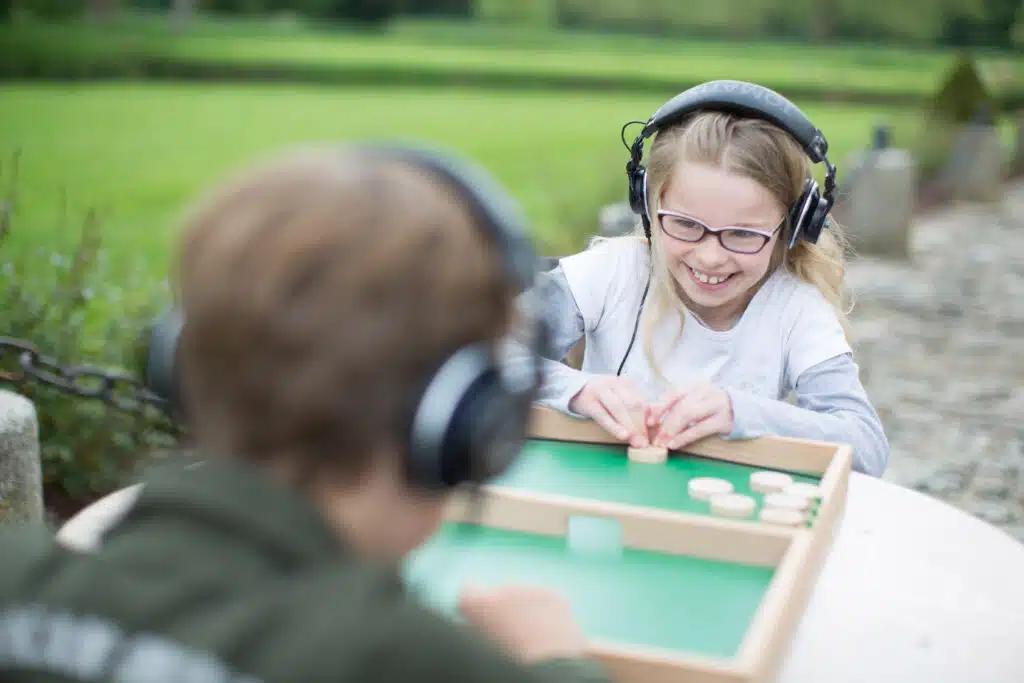The Tomatis® Method is what we offer, and it can be effective in providing a solid intervention method and support system to children suffering from Auditory Processing Disorder and Learning Disabilities. In this blog, we’re going to break down how the Tomatis® Method can help you.
How are Auditory Processing Disorder and Learning Disabilities diagnosed in the Tomatis® Method?
The Tomatis® listening test is not a diagnostic tool. Instead, it determines the possibility of APD in adults and children. Unlike other diagnostic tools, children younger than seven years old can be tested. It is at these ages that brain training can have a significant effect on brain development. A study suggested that musical training before age seven can result in long-lasting brain and behaviour changes.
Our Tomatis® certified professionals conduct the listening test in different sessions. These are the preliminary interview, listening sessions (passive phase), and listening sessions (active phase). Throughout the sessions, our professionals regularly evaluate your child’s progress.
How does the Tomatis ® Method work?
The Tomatis® Method follows the principles of neuroplasticity. Neuroplasticity is the ability of the neurons in the brain to “change its connections and behaviour in response to new information, sensory stimulation, development, damage, or dysfunction.” The central auditory nervous system, responsible for auditory processing, has this quality.
A study shows that auditory training promotes biological and behavioural changes due to the brain’s neuroplasticity. The Tomatis® Method retrains the listening function by stimulating the brain. Mozart and Gregorian chants are commonly played. The music is filtered using an electronic device called TalksUp® to amplify high-frequency sounds. through the Gating®.
Auditory development in the fetus develops in the first 20 weeks inside a mother’s womb. The auditory system needs auditory stimulation such as speech, music, and sounds outside the womb. These factors contribute to a healthy auditory system.
Dr. Tomatis understood this concept. The unborn child’s development, including listening, can be affected by the mother’s physical and emotional state. The Tomatis® Method uses the mother’s voice recording to bring back the child to the time in the womb. This type of therapy as a sonic journey is used appropriately and depends on the person’s individualised program.

What is the Electronic Ear?
Dr. Tomatis developed the electronic ear that delivers music, speech, or sound. The special headphone works on the principle of bone and air conduction. The TalksUp (player) contains acoustic filters to regulate sounds to suppress distortions.
- The headphone challenges the brain’s listening function through Gating®. The electronic gating mechanism changes the contrast of sounds and forces the brain to adapt to the change. Gating® awakens the brain from its automatic state to an active form of listening.
- The headphone can be controlled to vary the balance of sound. The right ear receives more intensity since it affects the brain’s left side, responsible for learning functions.
- The TalksUp® has a timing delay feature that can be adjusted. The timing can be changed to slow down the processing of information. It enables the person to adapt to the incoming sound, and it can be gradually increased.
How Does the Tomatis® Method Help Children With Auditory Processing Disorder (APD) and Learning Disabilities (LD)?
Based on studies, the Tomatis® Method may positively impact auditory functions, IQ, academic skills, and communication abilities.
Ms. Deborah Swain studied 41 randomly selected people with APD. They went through Tomatis® auditory stimulation sessions. The result of Ms. Swain’s study reveals that the Tomatis® Method improves auditory functions. It includes auditory memory, sequencing, discrimination, and cohesion.
About 400 children and teens with learning and communication disorders participated in a study. They underwent Tomatis® Listening Therapy for six months, and during those times, 85% of the participants showed better communication skills. Attention span and memory improved among 86% and 73% of the participants, respectively. Another 74% of them progressed in the quality of their speech, and 69% had better spelling aptitude.
Dr. Tim Glimor studied about 230 children with learning and communication disorders. The result of the meta-analysis was published in the International Journal of Listening. It reveals that the Tomatis® Method had a positive effect on linguistic and cognitive, and auditory skills. It also had positive impacts on psychomotor and personal, and social skills.
Try This Tomatis® Method
Listen to the Tomatis® Method expert, Ms. Françoise Nicoloff, as she talks about APD and LD and how the Tomatis® Method can help your child attain a better quality of life. You can get a FREE 20-min call to address your concerns, so better reach out!
Françoise Nicoloff
Official Representative of Tomatis Developpement SA in Australia, Asia and South Pacific, Director of the Australian Tomatis® Method, Registered Psychologist, Certified Tomatis® Consultant Senior, Tomatis® International Trainer and Speaker, Co-author of the Listening Journey Series, 40 Years of Experience, Neurodiversity Speaker




